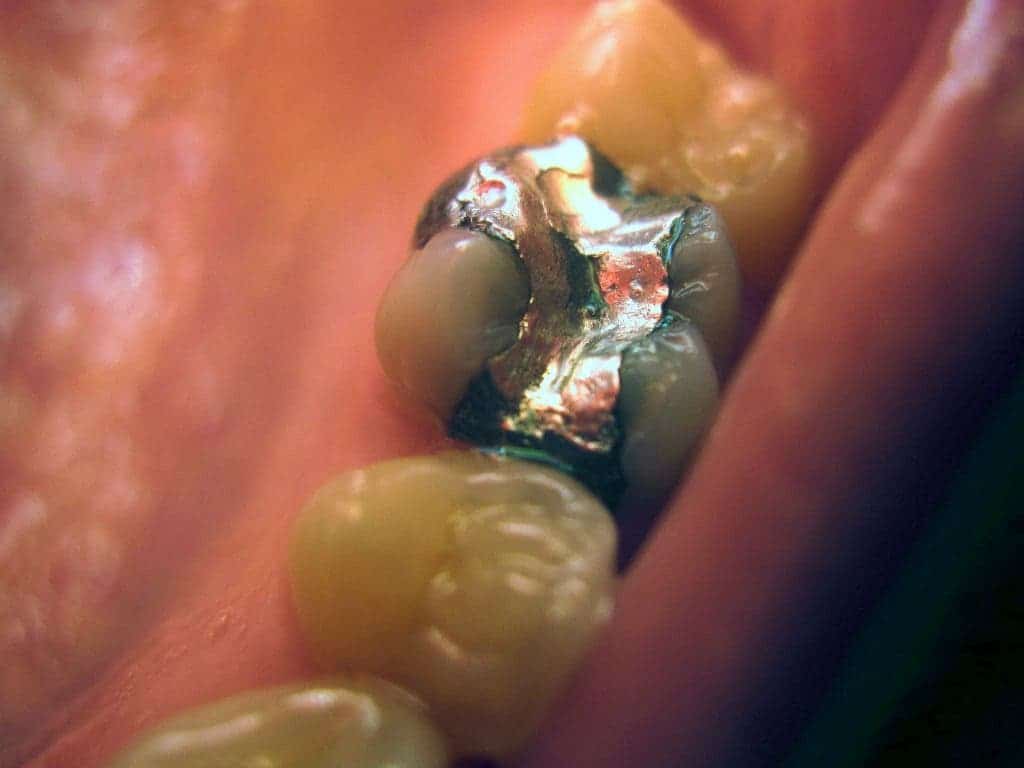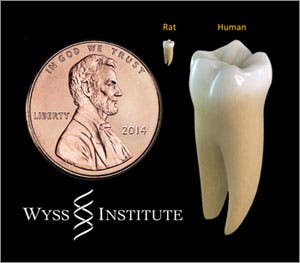I have pretty rotten teeth, and I’m paying a lot — both financially and emotionally — for all of those sweets. Well, if only I learned sooner about the work of a group from Harvard University, US and University of Nottingham, UK., who devised a novel and non-invasive procedure which not only repairs but also regenerates damaged teeth.

Right now, if you have a cavity, a dentist’s typical procedure is to drill out the decayed material, then fill it with, well, a filling. If the damage is extensive, however, the doctor will have to drill through the enamel and dentin until the pulp can be drained. Dental pulp is an unceremonious name for the tissue where all the tooth’s nerves and blood vessels live, also known as the things that hurt like hell.
Fillings, though better than a hundred years ago, haven’t changed that much since they were introduced. They’re “toxic to cells and are therefore incompatible with pulp tissue inside the tooth,” said Adam Celiz, a Marie Curie research fellow at the University of Nottingham.

What Curie and colleagues propose instead is placing synthetic biomaterials in direct contact with pulp tissue to stimulate the native stem cell population for repair and regeneration of pulp tissue and the surrounding dentin.
While some might shudder at the words “stem cells”, the researchers note that their procedure involves stimulating local stem cells that already reside in the tooth without having to source them from some other place in the body or donors.
The stimulation is made by a low-power laser already widely used by many dental practitioners.
“It would be a substantial advance in the field if we can regenerate teeth rather than replace them,” said Wyss Institute Core Faculty member David Mooney who led the research .
This process was tested on rats, which was very challenging for the researchers who weren’t used to working at such a small scale. The rats’ molars were drilled, then a low-dose laser treatment was applied to trigger dental stem cells to form dentin, the hard tissue that is similar to bone and makes up the bulk of teeth. After about 12 weeks, high-resolution x-ray imaging and microscopy confirmed that the laser treatments triggered the enhanced dentin formation.
The regenerated dentin is strikingly similar to normal dentin, but did have a slightly different morphological organization.

Since the dawn of medical laser use in the late 1960s, doctors have been accumulating anecdotal evidence that low-level light therapy can stimulate all kind of biological processes including rejuvenating skin and stimulating hair growth, among others. Following a round of culture-based experiments, the team established the molecular mechanism responsible for the regenerative effects of the laser treatment.
It turns out that a ubiquitous regulatory cell protein called transforming growth factor beta-1 (TGF-β1) played a pivotal role in triggering the dental stem cells’ growth into dentin. This marks the first time that scientists have gotten to the nub of how low-level laser treatments work on a molecular level, which lays the foundation for controlled treatment protocols.
“The scientific community is actively exploring a host of approaches to using stem cells for tissue regeneration efforts,” said Wyss Institute Founding Director Don Ingber, M.D., Ph.D., “and Dave and his team have added an innovative, noninvasive and remarkably simple but powerful tool to the toolbox.”
For their extraordinary work, the researchers from Harvard and University of Nothingham were awarded second prize in the materials category of the Royal Society of Chemistry’s Emerging Technologies Competition 2016. Now, they’re working with commercial partners to make the procedure available for dental patients as an alternative to traditional fillings. As someone who has a dentist’s appointment next Friday for a filling, this is saddening, But with a bit of luck, in a couple of years’ dental practice might get a new powerful tool — one that’s a lot less painful, and a lot more natural.






